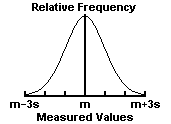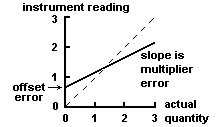- Messages
- 1,229
- Reaction score
- 740
- Points
- 123
What is the diff between systematic and random error
We are currently struggling to cover the operational costs of Xtremepapers, as a result we might have to shut this website down. Please donate if we have helped you and help make a difference in other students' lives!
Click here to Donate Now (View Announcement)
What is the diff between systematic and random error


http://papers.xtremepapers.com/CIE/...el/Physics (9702)/9702_s03_ms_1+2+3+4+5+6.pdfcan someone please give me mark scheme for M/J/03 paper 1 and 2.
X-rays and computed tomography (CT) scans are primarily used to visualize bony structures. CT scans actually use multiple specialized X-rays to view the body area from different angles and then give multiple cross-sectional images of it. The benefits of better visualization offered by CT over X-ray must be weighed against the risks of significantly increased radiation exposure and increased time and costs of the procedure ;Guys Help me
Distinguish between an x-ray image of a body structure and a CT scan?
Don't send me the application booklet, send me just the answer. because the application booklet is not clear
Help me concerning How MRI works and X-ray imaging?
For CT Scan :
Body is divided into sections, each sections is divided into voxels. x ray are directed through the slides at different angels. imag are taken at different angles and are processed and combined together. this is repeated for different slides. image are combined by powerful computers to give a 3d image. the 3d image can be rotated and viewed.
Is it good>
Thank you very much
Thank you very much for all the explanations.
Than
Thank you very much this is very helpful
Its 9702/11/m/j/13 question 19It wpuld be better if you would just tell me the question number and year of paper.
check the marking schemePlease answer question Qn 5b and 5c (W12 var.43) http://papers.xtremepapers.com/CIE/Cambridge International A and AS Level/Physics (9702)/9702_w12_qp_43.pdf
Thanks
For almost 10 years, the site XtremePapers has been trying very hard to serve its users.
However, we are now struggling to cover its operational costs due to unforeseen circumstances. If we helped you in any way, kindly contribute and be the part of this effort. No act of kindness, no matter how small, is ever wasted.
Click here to Donate Now